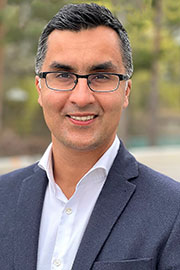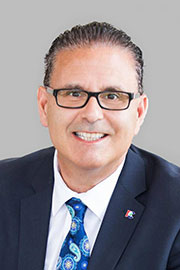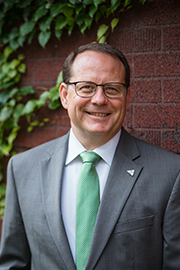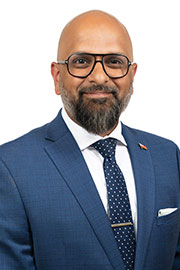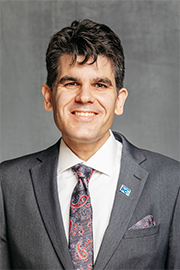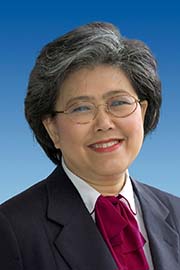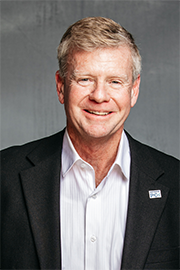- Jun/6/24 9:00:00 a.m.
Good morning. I move that, in the opinion of this House, the government of Ontario should assess the Ontario lung cancer screening program to determine whether expansion is warranted and more sites are necessary to better serve Ontario patients and to look at broadening the eligibility criteria for access to the lung screening program.
This is a cause close to my heart because, as a nurse who still works at Etobicoke General Hospital, I see the devastating impact that lung cancer has on individuals and their families. A diagnosis is devastating. I know that our government is committed to increasing access to health care, but there’s always more work to be done.
Lung cancer impacts your ability to breath. As much as we can manage symptoms, there’s nothing worse that a patient can be going through than when their ability to breath is restricted. Speaker, 11,000 people across Ontario are diagnosed with lung cancer each and every year, with the average age being 44 years old to 50 years old. I wonder how many members fit in that range. That’s a pretty scary number, 44 years old to 50 years old. That’s the average age of diagnosis. And it is the most common cancer diagnosis in the country. It claims the lives of close to 7,000 Ontarian residents each year.
Most lung cancers are caused by tobacco smoking, with the more years you smoke, the greater the risk. This also includes exposure to second-hand smoke. The most recent data from 2020 shows that the smoking prevalence in Ontario is 9.9%, which is lower than the national average of 11.6%. That has been on a decline over the last several years, which is a good trend that we would like to see and support.
But let’s not forget that lung cancer is not always linked to smoking. Close to 15% of lung cancer patients never smoked, and 35% stopped smoking long before their diagnosis. Other causes include family history, previous radiation therapy, exposure to carcinogens such as asbestos or exposure to radon gas. This fact about radon gas is not one that is widely known by the Ontario public.
Speaker, Ontarians should know about radon gas and its dangers. It is an invisible and odourless radioactive gas that is naturally released by the breakdown of uranium in soil, rocks and water. It can get into homes and buildings through cracks and holes, and eventually build up to unsafe levels. There are many things Ontarians can do to protect themselves and their loved ones from radon gas. The first is to buy a testing kit at their local hardware store, and if levels are detected, they can seal cracks in their home’s foundation, use a heat recovery ventilator or allow for natural ventilation.
Speaker, I would also like to touch on the growing problem of vaping among our young people. As you know, my colleague the member for Kitchener South–Hespeler has done incredible work advocating for keeping vapes, tobacco and cannabis out of schools. In a way, both of our motions intersect on this vital issue. While vaping hasn’t been around long enough for scientists to conclusively know if vaping causes lung cancer, we do know that vapes contain dangerous chemicals that no child should ingest. These include, of course, nicotine, a highly addictive substance that negatively affects developing brains, and harmful carcinogens like formaldehyde. Another chemical found is diacetyl, which is linked to a lung disease known as “popcorn lung,” which is damage to the lung’s small airways. Speaker, while we don’t know if vaping causes lung cancer, there is a chance that it might, and keeping these devices out of kid’s hands could prevent a potential health crisis that we may not even see coming.
I also want to bring attention to asbestos, a carcinogen with a strong link to lung cancer and diseases such as mesothelioma and chronic pulmonary disease. It is a fibrous mineral that is known for its durability and heat resistance, and exposure is most commonly experienced by those who work in the manufacturing sector. Before 1990, it was commonly used to insulate apartment buildings and homes from cold weather and was used for fireproofing. Inhaling its tiny fibres is painless but can cause severe problems in the future. It takes decades after exposure, ranging from 10 to 40 years, to develop cancer, depending greatly on how long your exposure was.
In 2018, Canada banned the manufacturing, import, sale and use of asbestos; however, it is still our country’s leading cause of workplace death. Across Canada, nearly 2,000 cases of lung cancer are linked to asbestos exposure. Speaker, it is a myth that asbestos is a settled issue. There are still people in our communities who have been exposed prior to the ban, and it can be found in older buildings.
Avoir un cancer du poumon peut être une expérience très douloureuse et inconfortable. Il peut entraîner de nombreuses complications, telles qu’un essoufflement, des crachats de sang, des douleurs dans la région de la poitrine et la présence de liquide dans la poitrine, appelée épanchement pleural.
There are many things that Ontarians can do to reduce their risk of lung cancer, which includes, of course, avoiding tobacco, avoiding second-hand smoke, testing your home for radon gas and wearing a mask to avoid breathing in carcinogens in the workplace and keeping a healthy diet and active lifestyle.
This past November was Lung Cancer Awareness Month, and we had receptions from a number of incredible groups that advocate for this cause, such as the Canadian Cancer Survivor Network, the lung cancer foundation and Lung Cancer Canada, all united under one campaign entitled Right2Survive. I had the chance to meet cancer survivors whose stories of hardship and resilience inspired me to take action. And today, we also have a guest from the Canadian Cancer Society, Hillary, who has been a staunch advocate for putting this motion forward. These organizations work hard to advocate for both prevention and for Canadians living with lung cancer, and for that, I strongly commend their efforts and support.
Speaker, lung cancer is the leading cause of cancer death for people in Ontario. It kills more people than colon, breast and prostate cancers combined, because lung cancer is usually detected late, when symptoms can already be noticed. In Ontario, 70% of lung cancers are diagnosed at advanced stages, and as a result, survival rates are reduced. In fact, in Canada, five-year survival rates depend greatly on what stage the cancer was diagnosed. Those diagnosed at stage 1 have a five-year survival rate of 60%, but those diagnosed at stage 4 have only a 5% rate of survival. This is why early screening and increasing eligibility criteria are essential. And let’s not forget that lung cancer can spread to other body parts, including the brain and bones.
Speaker, let’s look at the facts. When you have earlier cancer detection, you have better treatment outcomes. This can only be done by expanding the eligibility criteria and the number of sites across Ontario.
Selon les critères d’admissibilité actuels de notre gouvernement, seules les personnes âgées de 55 à 74 ans qui sont des fumeurs quotidiens peuvent faire l’objet d’un dépistage. Or, il y a en Ontario des personnes qui n’ont jamais fumé de leur vie et qui finissent par contracter ce cancer du poumon, ce qui consiste d’une minorité.
Furthermore, while the Ontario Lung Screening Program currently operates in Oshawa, Sudbury, Ottawa and Toronto, there is no location in Peel region, a high-growth region home to 1.5 million residents. That is why I am calling on our Ministry of Health to assess this program and to determine if expansion is warranted and if eligibility should be broadened. Through screenings, we can change the lives of individuals and families across Ontario.
Speaker, we have done significant strides to broaden screening access for women at risk of breast cancer. We recently lowered the eligibility criteria for self-referral into the Ontario Breast Screening Program to 40 years old. I think we should also assess the lung cancer screening program eligibility because right now it is limited to persons aged 55 to 74, and if the average age of diagnosis is from 40 to 55, that means we really need to look at broadening this eligibility criteria.
Recently, a fellow member shared with me that his sister-in-law passed away from breast cancer at age 40. She was diagnosed with stage 3 cancer and passed away within weeks. That is devastating news. It made me think about all of us here in this House. It is a huge privilege to come in here and serve, but this job also comes with a huge level of stress, and stress can contribute to all chronic diseases, including that it can cause cancer.
So I want to just take this time to encourage all of my fellow members, as we head into the summer break—and we call it a break, but we all know we’ll be working very hard, attending many events, barbecues, meeting with our constituents—please take the time to take care of yourself. Please go get your annual health checkup. Go get your blood work done. Go get your screenings done. Because you can’t take care of your constituents and your family and all the people that rely on you if you don’t take care of yourself. So please, I implore every single one of you to do that over the summer break.
I just want to conclude with a quote from the Canadian Cancer Survivor Network: “Evidence shows that lung cancer caught at an earlier stage has better treatment outcomes. With lung cancer continuing to have the highest mortality rate among all types of cancer, it is more important than ever to ensure that everyone who may be at risk of developing lung cancer has access to the screening programs that could be the difference between life and death.”
- Hear!
- Rabble!
- Hear!
- Rabble!
- Jun/6/24 9:10:00 a.m.
I really enjoyed the speech from my colleague this morning.
The motion in itself is very timid. It basically asks that the government assess the lung cancer screening program that she described, determine whether expansion is warranted, if more sites are necessary and if the criteria need to be changed. I would say yes to all of this. Don’t ask the government to assess. You are part of the government. You have the power to do those things right here, right now.
The Ontario lung cancer screening program, I can tell you, has been a godsend. We have one in Sudbury. There are only five sites in Ontario that have such a program: Ottawa, Sudbury, Oshawa, Hamilton and Toronto. Are there people at risk of lung cancer throughout Ontario? Yes, absolutely. I look at northwestern Ontario, where the rate of smoking is way higher, in the 20s, when the average Ontario rate is about 12%. In my riding, we’re at 28% smokers. That continues in northern Ontario. These programs should be available to us in northern Ontario—and to everybody else. There are smokers throughout the province.
This program saves lives. We know that lung cancer is the leading cause of cancer death in Ontario. The reason so many people die of lung cancer is that by the time you are diagnosed, the cancer has grown too large, has spread to other parts of the body. There are very few indications that you have lung cancer until it has reached stage 3 or stage 4, at which point there are very few treatments available, and your five-year survival rate is about 5%—not very good.
But all of this changes if your cancer is detected early and there are treatments available. The five-year survival rate is over 60%. Things change for the better. But the way we have it now in only five hospitals, with very rigid criteria: you must be between the ages of 55 and 74; you must be a smoker or a former smoker; you have to have smoked daily for 20 years. And the person, the screening investigator—that’s how we call the person who does the screening. They’re quite rigid as to who gets to do that screening and who doesn’t. It should be changed for all of the reasons that the MPP has listed. It has to be done. If we agree to this, let’s not just assess; let’s actually go.
The program is more than just screening. Sure, they establish if you are eligible for the screening, but they also do a lot of very important teaching as to why they should be participating. They provide a lot of very good smoking cessation support for people who are addicted to nicotine and have a hard time stopping smoking, and if you have any nodules on your lungs, they will do the follow-up. They do a lot of navigation with the participants to help them, to make sure that they do not develop lung cancer and, if they do, that they know the treatment options and act upon them as quickly as possible.
Basically, what the detection is, is a low-dose CT scan. That’s it; that’s all. It takes minutes and you’re done. You will be informed of the results of your scan. There will be people explaining to you what has been seen—if you have stage 1 cancer, or 2 or 3, sometimes 4, depending on what they find—and they will support you.
This is a program that has been piloted in the five sites for years now. It has saved lives. It has diagnosed a lot of people. I can speak for the people of the northeast who have been diagnosed with early stages of lung cancer through this program. It needs to be expanded.
As I said, I agree with everything that is in the motion—just get it done. Don’t assess if it needs to be done. Get working on it. Get it done.
The member talked about the changes that have been done for self-referral screening for breast cancer, something we support 100%. I would say the same thing needs to be done for colorectal cancer. Right now, the age is at 50, yet not a day goes by that we don’t have dozens of people diagnosed with colorectal cancer at age 30, at age 40. Bishop Brigante, if you don’t know, who’s a very well-known artist in Ontario, somebody we can all be proud of, is in his thirties. He’s fighting advanced colorectal cancer. He had to work and fight really hard, and thank God his wife is a nurse and pushed for him to have a colonoscopy. This is how they diagnosed his colorectal cancer. It shouldn’t have to be that difficult. It should be available.
I would add to this: The stats that we keep have to be raced-based data. There are diseases that manifest themselves in populations—in Black, Indigenous, people of colour—differently from white. We have to start to collect race-based data so that the decisions that we make are not made for the entire population of Ontario but are made specifically as to what makes Ontario strong, and this is our diversity. But when our health care system does not collect race-based data—very few of them do this. There are some community health centres who do a good job. There’s one hospital that has started to do it and does a good job, but there are other provinces where it’s done automatically.
I had the misfortune of breaking my arm in British Columbia, had to go to the hospital. They collected race-based data right away, and they do it in a way that is not threatening at all. Why don’t we do that in Ontario when it is done in other provinces and could really change the way that we provide access to care in this province?
Having lung cancer usually will mean a hospital stay. This week, we debated my bill for nurse-to-patient ratios. I can tell you that if you are undergoing cancer treatment, stage 4, you are sick enough to be admitted into the hospital, and there are only three nurses for 36 patients, it makes no sense.
The NDP government in British Columbia brought a patient-to-nurse ratio so that, first, it’s better for the patients; there’s better care. It decreases mortality. It makes sure that the length of stay of the patient is shorter, the readmission rate is shorter. It’s a big win for the patient. It’s a big win for the nurses. So many of them are facing burnout right now. To have a caseload that a human being can handle makes all the difference for many of them who are not working in health care right now, who would come back to the bedside if we promised them nursing ratios, and it’s—
Interjections.
- Hear!
- Rabble!
- Jun/6/24 9:10:00 a.m.
I recognize the member from Nickel Belt.
- Hear!
- Rabble!
- Jun/6/24 9:20:00 a.m.
Good morning, Madam Speaker. Thank you very much for giving me the opportunity to speak in the House on this topic of paramount importance and which has had profound consequences for so many people here in Ontario and across our country. Of course, I am speaking to the private member’s motion calling for an assessment to expand the Ontario lung cancer screening program.
This is an easy one to support. I’m proud to support it. In fact, the Ontario lung cancer screening program began in 2017 under the Ontario Liberal government, so of course I would want to see this not just continue but succeed.
However, I’m going to begin by echoing the comments from the member from Nickel Belt that this motion could go so much further. For example, why is it calling for an assessment of the expansion of the Ontario lung cancer screening program as opposed to demanding an expansion of that? Why is it even a private member’s motion, which is strictly symbolic, instead of a private member’s bill, which we could all vote on and compel the government to expand the Ontario lung cancer screening program? Why is it that the government member won’t walk across to the Minister of Health and just ask her to expand the Ontario lung cancer screening program?
These are all things that could allow us to devote our time in the chamber to things that require a debate. There’s no question in anyone’s mind in this chamber that all of us agree to the expansion of the Ontario lung cancer screening program. After all, lung cancer is the leading cause of death from cancer in Canada.
And so, I don’t think a lot needs to be said about the merits of expanding the program. Every person in this chamber agrees to it, and I certainly do. The medical community would like to see this happen as well.
Instead, I would like to focus on the things that need to happen in order for us to be able to successfully and effectively fight cancer—lung cancer and all other kinds of malignancies here in this province. I also want to address a little bit some of the challenges that we may face in expanding the Ontario lung cancer screening program, because I am hoping that all of us will vote in favour of this.
The first challenge with the Ontario lung cancer screening program, if it were to be expanded, is that the majority of people in the province don’t know about it. Physicians may know about it. Nurse practitioners may know about it. But the majority of patients and people who are actually at risk don’t know that the program exists. But under this government, we have successive cuts to public health and health promotion activities which could allow people to know that.
Under this government, we have seen the worst health care system performance in our province’s history. We have more people in our province’s history than ever been who don’t have access to primary care: 2.3 million people don’t have it right now; 4.4 million won’t have it by 2026. If you don’t know about the program and can’t self-refer, and you’re one of a growing number of millions of people in our province that don’t have access to a nurse practitioner or a family doctor, how are you supposed to get referred to the Ontario lung cancer screening program?
But let’s say, against all odds, you’re able to surmount all of those challenges. The next thing is you’ve got to be able to find somewhere to get screened. I agree: We do not have enough screening sites. I believe we have five right now. Regrettably, the direction that this government has chosen to go with Bill 60 is to create integrated community diagnostic and surgical service centres. The idea is to be able to increase access to diagnostic and surgical services, but one of the challenges with it that has been brought forward time and time again is that many of the providers for that will be private, for-profit entities that will seek to create these centres in urban centres where the economies of scale and large enough numbers of patients can be generated.
Consequently, people in rural and northern areas will have greater difficulty in being able to access these services. These diagnostic and surgical service centres will draw diagnostic and technological resources away from suburban and rural hospitals and therefore make it more difficult for people to access lung cancer screening in their communities, instead forcing them to make the difficult choice between taking days off from work and travelling—mind you, without adequate funding to the Northern Health Travel Grant, which this government also voted against—and moving to one of these lung cancer referral centres, or not going altogether. So this is something that needs to be addressed if we actually want to expand the Ontario lung cancer screening program and make it a success, and I’m wholeheartedly committed to making it a success along with the member who introduced this motion.
But again, I want to emphasize: If this government was serious about fighting cancer, if this government was serious about detecting malignancies before they become a problem, when they are in a treatable phase, when they haven’t even become cancer yet, then they would have also taken a number of other steps. I understand the Canadian Cancer Society is here, so I know that they’ll agree with me that we need to bring PSA testing under public funding. This government has repeatedly voted against that. How can this government say they are serious about fighting cancer, about screening for cancer, when they repeatedly, time and time again, in the face of the Canadian Cancer Society, which is sitting right here—how can they vote down funding testing for PSA?
This is a government that, again, has chosen not to fund take-home cancer drugs.
This is a government that has not committed to delivering a family doctor for every single person in this province.
And the final thing: I salute the member who introduced this motion for enumerating many of the risk factors for lung cancer and for cancer generally. I agree we don’t talk enough and people don’t know enough about things like asbestos and radon. We could do more work to help people quit smoking and raise awareness around issues such as vaping and children.
However, one risk factor that she did not mention, a leading risk factor for cancer in our province and in our country, is alcohol. So you can imagine how perplexed I am that this government—with, admittedly, a limited budget in health care and, just provincially, a government that has a record debt and deficit unprecedented in our province’s history—rather than investing a billion dollars in health care, in cancer screening, in fighting malignancies, instead chose to commit to invest that $1 billion in a risk factor for cancer by trying to bring beer to convenience stores a mere one year early. This government is twisted in knots and cannot get its priorities straight.
So I’m going to keep my remarks brief. I think I have made it clear that I entirely and wholeheartedly support expansion of the lung cancer screening program. However, I think and hope that I’ve also illustrated the folly in the way this motion has been presented. I hope that people will take away from this that this should have been a bill, or even better, it should have been a conversation with the Minister of Health. It should have been not a request for an assessment to expand the lung cancer screening program; it should have been a demand to expand the lung cancer screening program. It should have called for including funding for PSA testing. It should have called for take-home cancer screening.
I don’t know which minister brought it in, but it should have called for the government to instead invest their billion dollars not on bringing beer to convenience stores one year early, but to invest it in health care, in getting a family doctor for everyone, in supporting this program. It doesn’t.
It’s a flawed motion that we’ll support nonetheless because I and the people in the House will stands with patients in Ontario. We do want to fight cancer, and we’re committed to showing this government the right way to do it.
- Hear!
- Rabble!
- Jun/6/24 9:20:00 a.m.
Yes—and it’s a cost-saving for the hospital as well.
All of this Ontario is ready to work upon. We will support the motion. It’s going in the right direction. It is something that needs to be looked at. But the member is a member of the government who could go from looking at it to actually getting it done. The sooner that we do that, the better.
I also want to comment on the vaping. We are spending $30 million to put vape detectors in our schools when we have a bill on the docket right now called Vaping is not for Kids. Let’s look at what other jurisdictions are doing so that we prevent our kids from vaping. One of the major reasons kids vape is because it tastes really good. There is no reason to have bubble-gum-flavoured vapes. No smoker who wants to quit smoking wants a bubble gum vape; they want something that tastes like tobacco. They only reason the vape industry is doing this is because they want kids to start vaping. Some of the vapes: You do it once, you’re hooked. There’s such a high concentration of nicotine that the kids will be addicted instantly.
And then, because we put the buying age at 18—there’s always an 18-year-old in a high school that will go and buy a list of vapes for all of his friends at the high school. Put it at age 21. Put it at age 25, like other provinces have done. There are no 25-year-olds in high schools. Nobody will be able to go and buy the vapes, and you won’t need to spend $30 million on vape detectors in bathrooms because kids won’t be vaping. But no. When was the last time we saw any health promotion, disease prevention initiative coming from the government? Zip, nothing.
The member did talk about the determinants of cancer, stress being one of them. But really, if you stop smoking, drink in moderation, eat healthy food, have a healthy weight and exercise regularly, 60% of all cancers go away. Should I repeat that? If you stop smoking, drink in moderation, eat healthy food, have a healthy weight and exercise regularly, 60% of all cancers disappear.
Have you heard anything from this government to help 60% of all cancers disappear? No, absolutely not. There is so much more that this government could do, but so far, we haven’t seen any.
Her comments on asbestos—agree 100%.
She also had comments on use percentage. I forgot if it’s 16% or 15% of all lung cancer comes from gases. I live in the middle of the Canadian Shield. Many, many houses in Nickel Belt, including my own, are on a big rock where you have rocks in your basement, and argon gas easily gets into your house. Those detectors should be made available to all and should be free. People should be encouraged to do those things, not having to go to Home Hardware and look at 16 different detectors, not knowing if any of them are accurate or not, if you’ll ever get the result or anything like this.
I see the time is running, Speaker. This is a step in the right direction. This is what needs to be done. We have a program.
Le Programme ontarien de dépistage du cancer du poumon est un programme qui a fait ses preuves—un programme qui existe dans cinq hôpitaux seulement en Ontario, mais qui doit être disponible ailleurs. Moi qui viens du Nord, je vous dirai que pour ceux à Timmins, à Sault Ste. Marie, à Thunder Bay, ils ont besoin d’avoir accès à ce programme-là—et bien des communautés du Sud, comme la députée a mentionné. C’est un programme qui a fait ses preuves, qui sauve des vies et qui devrait être—je vous dirai de passer aux actes le plus tôt possible.
- Hear!
- Rabble!
- Jun/6/24 9:20:00 a.m.
I recognize the member from Don Valley East.
- Hear!
- Rabble!
- Jun/6/24 9:30:00 a.m.
Good morning, Madam Speaker. It’s an honour to join the debate this morning on the last day of the Legislature before the summer break, and especially to speak in support of private member’s motion 77, moved by my friend from Mississauga Centre, on a lung cancer screening program.
I want to thank her for her advocacy on this issue, which is a very personal issue for me as well. My father worked as a welder at the Texaco refinery in Port Credit. Every day, he was exposed to asbestos in the gaskets and the welding blankets, and he passed away from asbestosis and lung cancer over 40 years ago, on December 12, 1985. Obviously, we did not have screening available at the time, but today, proper screening can catch hundreds or even thousands of cases of lung cancer at early stages every year, giving people across Ontario a better chance to recover and more years together with their loved ones.
This is the same reason that I introduced Bill 66 to promote stethoscope checks to detect heart valve disease early, when it can be treated efficiently. I want to thank all members for their support for my bill, as well, as we move towards third reading.
But returning to today’s motion: As the member from Mississauga Centre said, lung cancer is one of the most common cancers in Ontario, with over 11,000 cases diagnosed each year. It is also the leading cause of cancer death in Ontario, with over 7,000 deaths every year.
In a majority of cases, lung cancer is only diagnosed at stage 4, after the cancer has already spread outside the lungs. Unfortunately, at that point, the chances of recovery are very low. On the other hand, according to Stats Canada, the five-year survival rate for patients diagnosed early at stage 1 is over 60%. Lung cancer screening with a low-dose CT scan is the best way to detect lung cancer early, when it can be treated most effectively.
Ontario is the leading supplier of medical isotopes that help detect and fight cancer right across the world. As the parliamentary assistant to the Minister of Energy, I was proud to join the member and our former colleague Bill Walker in Bowmanville two weeks ago for the launch of the Central and Eastern Ontario Isotope Alliance, which will help to expand medical isotope production from our nuclear sector, with a huge win for cancer patients here in Ontario and around the world.
Screening for lung cancer has been available since 2017 in Ontario for patients at high-risk, including patients from 55 to 74 years who have smoked for 20 years. This is in line with the guidelines of the American Cancer Society. But last November, the society released an update to recommend scanning for smokers from 50 to 80 years old. I agree with my friend that the Ministry of Health should look at these new guidelines to determine if Ontario’s lung cancer screening program should be expanded as well for younger and older patients, and beyond the four current locations in Oshawa, Ottawa, Sudbury and the University Health Network here in Toronto.
Speaker, it is also critical that young patients and non-smokers who do not qualify continue to have the clear pathway for lung cancer screening when they develop symptoms that are associated with lung cancer.
Speaker, I also want to take a moment to thank the Minister of Labour and former minister Monte McNaughton for their work on Bill 149 and Bill 190, our latest Working for Workers bills.
Firefighters are often exposed to toxic chemicals—like my father—and they are at least four times more likely to be diagnosed with cancer. This bill will help to ensure they have fast and easy access to the compensation they deserve for work-related diseases.
And as I said here last month, the Minister of Labour is working to include asbestos in the Occupational Exposure Registry, beginning next year, which will also help identify workers who are most at risk for lung cancer and asbestosis.
It is great to share our time today with the member from Milton. I just want to take the opportunity to congratulate him again on his win last month. I know he’s going to be an effective MPP and a great representative for the people of Milton.
I also want to thank my OLIP intern for the spring term, Milena Basciano, for all her great work in my office, and I want to wish her the very best in everything she does next.
And last, as the House rises for the summer, I want to wish all members and staff a happy, safe and healthy summer.
- Hear!
- Rabble!
- Jun/6/24 9:30:00 a.m.
I recognize the member from Mississauga–Lakeshore.
- Hear!
- Rabble!
- Jun/6/24 9:40:00 a.m.
It’s an honour to rise today to speak to motion 77, to look at the possibility of expanding the lung cancer screening program. It’s a motion I’ll be voting for, and I appreciate the member from Mississauga Centre for bringing it forward.
Speaker, I believe the lung association has already brought forward compelling arguments of why we need to expand the number of screening sites in Ontario—we only have five, far less than other provinces with smaller populations—and why we need to expand the scope beyond smokers. We know smoking is a cause of lung cancer, but increasingly people are being diagnosed with lung cancer who have never smoked. That is where we’re seeing the rising number of lung cancer cases. So expanding the scope of the screening is critically important as well.
My hope is that this motion passes today, but I’m hoping the member takes this motion directly to the Minister of Health and says, “We have to put this motion into action.” While the member is having that conversation with the minister, I’m hoping the member will say, “Why not expand screening for all cancers?”
Just as I was walking in here, I got a phone call from my doctor with the results of my latest PSA test. It would be great if all men could get a PSA test covered under OHIP. I’m lucky I have insurance coverage on it, but a lot of people don’t. But it should be all cancers, because we know that the earlier we detect—and I know the member knows this, as a nurse—the more likely we are to cure. As the member opposite just stated, 11,000 cases of lung cancer, 7,000 deaths—and most of the time, they’re detected at stage four. The earlier we can detect, the more likely we know people can survive.
So what is it going to take for early detection? Well, I’m one of those lucky people. I have a family doctor. I’m not one of those 2.3 million Ontarians who don’t have access to a family doctor. My access to screening and the information that I need around screening for all types of cancer comes from my family doctor.
I just had my annual physical a couple of weeks ago, and my doctor said, “You might be at risk for colon, you might be at risk for prostate, you might”—he just listed it off and said, “Here is where you go. I am going to give you the requisition form for the blood work and other screening that you need.” Not everyone has that. So, if we’re going to look at early screening of lung cancer and all forms of cancer, then we need to make sure everyone has access to a family doctor, who is a gateway to that screening.
Then of course, when it comes to lung cancer, we have so few sites around the province that even if your doctor says, “Hey, you’re eligible for screening. We’ll sign the requisition forms for you to do that,” it becomes very challenging for people to access screening because they don’t live near a place where they can access screening. So, I wanted to put that on the record.
I want to close—and I’m not going to use all of my time—on a few important notes that came out of my last meeting with the lung association, because one thing that hasn’t been talked about enough, I believe, is how do we prevent lung cancer in the first place and what are some of the growing threats to lung cancer that could possibly help explain why we’re seeing such growth in lung cancer from people who don’t smoke. Some of those have been mentioned today, and I appreciate the member opposite talking about it.
One is radon testing, ensuring that we have radon testing for homes, easily accessible and available, for people and in workplaces.
Second is looking at air pollution. When I met with the lung association, they had three key recommendations around reducing air pollution. One was better testing, especially of traffic-related air pollution, which historically affects more vulnerable and low-income neighbourhoods. We know from some testing that the University of Toronto did in the city of Toronto that neighbourhoods that are located closer to Highway 427, the Gardiner Expressway, the Don Valley Parkway and larger boulevards like Steeles Avenue, for example, have higher levels of air pollution, which contribute to lung cancer.
The other one is people who live in close proximity to gas plants. So the Portlands gas plant, for example, in the Beaches in Toronto, is the largest single source of air pollution in the city of Toronto. And you’re seeing that in other places. In Halton, for example, people who live around the Halton gas plant—for those of you like myself, I travel between Guelph and Toronto all the time, and I drive right by it on the 401—one, minimizing the use of those gas plants in the first place to minimize the toxic air pollution, but two, making sure we have air screening in place to make sure the pollution levels are not at elevated levels, affecting human health and potentially affecting people with lung cancer.
The second area they talked about with me was the importance of indoor air quality and ensuring that we have proper filtration and filters like HEPA filters in buildings, in homes and especially in schools, where children are incredibly vulnerable, as a way to help mitigate lung cancers.
Then the next one was, interestingly enough, school buses. Most of our school buses are diesel engines. We know the particulate matter from diesel engines negatively affects people’s lungs. The sooner we can electrify school buses to reduce that particulate matter, the more protections we provide for children. Because we know that the airborne pollution from diesel engines is particularly dangerous for young people and their lungs.
The final one in this category is forest fires. Last year, a million acres burned in Ontario. During four days in the first week of June, that cost our health care system $1.28 billion, primarily due to admissions to emergency departments for people with respiratory problems, oftentimes asthma related. But that toxic air affects people’s lungs. We don’t know yet what the implications are for lung cancer, but the lung association is deeply concerned about the long-term effects of persistent exposure to forest fires. Obviously, our wildland firefighters are the most at risk; they’re the ones on the front lines, and we need to make sure they have the proper PPE and masks and things to protect them, but just average folk walking around our communities are affected, as well.
Making sure that we do everything we can to reduce fire risk and we have firefighting in place—and I think we’re going to have to start looking for folks who have had persistent exposure to toxic air from firefighting being part of the screening process, because they are going to be at risk.
And then finally, on the prevention side, I want to just talk a little bit—I know the member from Nickel Belt talked about vaping. I think we’re going to need stronger rules to ramp up smoking prevention. Even though we’ve done a good job, we still aren’t there yet. But where we’re really having a challenge now is with vaping and with young people. We know the lung association is deeply concerned about the cancer implications of rising rates of vaping, especially among young people—so to make sure we have the rules and regulations in place to prevent that, to reduce vaping and to prevent the long-term implications of that.
I want to close by saying that the lung association said to me, one in five people suffer from lung disease; five in five people breathe. The best way to prevent lung disease, lung cancer is to make sure the air we breathe is clean and healthy. That is something I’m hoping that, if all of us are going to vote for this motion, we can draw inspiration and work across party lines to do everything we can to ensure the air we breathe is clean and healthy.
- Hear!
- Rabble!
- Jun/6/24 9:40:00 a.m.
Further debate?
- Hear!
- Rabble!
- Jun/6/24 9:50:00 a.m.
I’m pleased to rise in support of this motion. This issue is near and dear to my heart. I lost my grandmother, both my aunts on my father’s side and my aunt on my mother’s side to cancer. To this day, I believe that if they had access to early screening, their lives could have been prolonged or perhaps saved.
As part of looking into this motion, I was shocked to learn that lung cancer kills more people in Ontario than brain cancer, bladder cancer, leukemia, prostate cancer, breast cancer and stomach cancer combined. In fact, the probability of dying from cancer is highest in the case of lung cancer for both males and females.
The reason for this high probability of dying from lung cancer has to do with the fact that lung cancer survival rates vary significantly depending on the stage of diagnosis. If someone is diagnosed at stage 1, their chance of survival is 60%, and it drops to below 5% if they’re diagnosed at stage 4, when many people unfortunately are diagnosed. This underscores the importance of diagnosing lung cancer as early as possible.
One statistic that jumped out was that 70% of lung cancers in Canada are diagnosed at an advanced stage, unfortunately. That makes a difference between life and death. That means that someone’s parent or their brother or their sister or their friend might have survived and gone on to live many years of productive life, many productive years.
Lung Cancer Canada agrees that comprehensive lung cancer screening programs are essential to improving early detection rates and saving lives. While lung cancer continues to have the highest mortality rate among all types of cancer, it is more important than ever to ensure that everyone who may be at risk of developing lung cancer has access to early screening programs.
Speaker, I’m proud to be part of the government that takes health care seriously and is investing $85 billion in health care, nearly $25 billion more than the previous government. This is the government that ended hallway health care that plagued the province under the previous government. In the past five years, we’ve added over 3,500 hospital beds. We’re building 50 new hospital projects through our $50-billion investment to add 3,000 more. Since 2018, 80,000 new nurses and 10,400 new doctors have registered to work in Ontario. We were the first province in Canada to introduce as-of-right rules to allow health care workers to move to Ontario from other provinces to start working immediately.
Our government provides an organized screening program, the Ontario Lung Screening Program, that helps screen people at high risk of getting lung cancer. This program is open to people between the ages of 55 and 74 years old who have smoked cigarettes every day for 20 years and not necessarily 20 years in a row. As the House is aware, currently this program operates at four main sites: Oshawa, Toronto, Sudbury and Ottawa.
Looking into broadening the eligibility criteria for access to the lung screening program might catch cancer at earlier stages for a lot of people who today don’t have access to the screening programs. Adding another site in or around the Peel region may also provide access to people who currently don’t have access to one of the four sites.
This private member’s motion will hep us determine whether an expansion to the screening program is warranted and whether we should broaden the eligibility criteria for access to the lung screening program.
While my riding is not in the Peel region, it is adjacent to Peel, and residents of my riding and other residents of Halton travel routinely to Peel for their health care needs.
In fact, my father is in Trillium hospital right now in the Peel region, as I speak, for his angiography. My uncle was recently admitted to Credit Valley Hospital, also in the Peel region, for his cardiovascular disease.
Should Peel be selected as one of the sites for the expansion of the lung screening program, it would not only help the 1.5 million residents of Peel region but also over 600,000 people in the Halton region.
As the House is aware, both Peel and Halton are among the fastest-growing regions in Ontario. Under the provincial growth plan, the Halton region is projected to grow to 1.1 million people by 2051, and the Peel region is projected to grow to 2.28 million people.
While it is common for people in my riding and the rest of Halton region to travel to Peel for complex health care needs, the same cannot be said about travelling to Ottawa, Sudbury, Oshawa or Toronto, where lung cancer screening centres are currently. I fear that many might forgo screening that might have caught the cancer for them at an earlier stage and could have saved their lives.
Speaker, I thank the member from Mississauga Centre for her motion as well as her advocacy on this very important issue. I support this motion and urge my colleagues to do the same because better access to lung cancer screening can help find lung cancer early, which is when the treatment has the best chance of working. I’m looking forward to seeing my colleagues support this motion.
- Hear!
- Rabble!
- Jun/6/24 9:50:00 a.m.
On a point of order: Pursuant to standing order 7(e), I wish to inform the House that tonight’s evening meeting has been cancelled.
- Hear!
- Rabble!
- Jun/6/24 9:50:00 a.m.
It is a pleasure to rise to today to share with this House some important investments our government has made in my riding of Perth–Wellington.
Last week, I was joined by the Minister of Education to announce a brand new Catholic elementary school in Drayton, Ontario. This represents $17.3 million in investment by our government in our rural education system and will create 222 new student spaces and 64 new child care spaces.
This is a huge investment for Drayton and area because, for too long, local families did not have any affordable child care options locally. But our government is delivering for rural Ontario after years of inaction from the previous Liberal government.
Speaker, the good news doesn’t stop there. I also had the pleasure of announcing that our government is funding a major expansion of St. Mary’s Catholic School in Listowel. This investment of $5.8 million will help build an additional 150 student spaces and 98 child care spaces. These two projects are part of our larger $1.3-billion plan that more than doubles the funding to build new schools and expands child care spaces across Ontario.
Since 2018, our provincial government has invested over $34 million in communities across Perth–Wellington to build 250 new child care spaces and 470 new student spaces. While the previous Liberal government closed 600 rural schools, our government will continue to invest in rural Ontario.
- Hear!
- Rabble!
- Jun/6/24 9:50:00 a.m.
It’s truly a privilege to rise in celebration of the Registered Nurses’ Association of Ontario Windsor-Essex chapter’s Lois Fairley Nursing Award. It holds a special significance in Windsor and Essex county, honouring nurses who embody the values of compassion, professionalism and dedication to patient care.
And so, I celebrate this year’s recipient of the 2024 RNAO Lois Fairley Nursing Award, Anna Dudok. Her remarkable legacy of service to our community is truly deserving of this award. Anna’s dedication and impact as a nurse at Huron Lodge in Windsor since 1991 has not only earned her this prestigious honour, but it has also left an indelible mark on the lives of countless patients and their families.
Her unwavering commitment to resident-centred care, her vast knowledge honed over years of service and her compassionate approach to every interaction exemplifies the epitome of nursing excellence. Anna’s willingness to go above and beyond, from advocating for her residents’ needs to providing comfort and support during challenging times, embodies the true spirit of nursing.
Anna’s influence extends far beyond her immediate surroundings. Her dedication to mentoring and guiding new hires ensures that her legacy of compassionate care will continue to thrive at Huron Lodge for years to come.
To Anna, thank you for your tireless dedication and for exemplifying the very best of nursing. The lives that you impacted and all those that you care about has been immeasurable and your legacy will continue to inspire us all.
- Hear!
- Rabble!
- Jun/6/24 9:50:00 a.m.
Further debate?
Ms. Kusendova-Bashta has moved private members’ notice of motion number 77. Is it the pleasure of the House that the motion carry? Carried.
Motion agreed to.
The House recessed from 0958 to 1015.
- Hear!
- Rabble!
- Jun/6/24 9:50:00 a.m.
I hold an annual member’s statement writing competition for high school students in my riding. Students are welcome to submit a statement on any issue they feel passionate about. It’s designed to empower young people and foster youth participation in politics by bringing their voice directly to Queen’s Park and speaking to issues in their own words.
The winner for 2024, as selected by an independent committee, is Shivani Saravanan from Humberside Collegiate. Here is Shivani’s statement:
“Food prices are rapidly increasing in Toronto, and many residents are unable to afford healthy nutritious foods and have become dependent on food banks.
“In the past year, three additional food banks have opened in Toronto to meet the city’s rapidly growing demand, which has increased by approximately one million visits.
“Food banks are playing an essential role by assisting those who are unable to afford essentials due to price inflation.
“While food banks provide the necessities, they do not solve the fact that many residents will not be able to afford food if prices continue to rise. They are only a temporary solution that disguises the true issue causing this situation.
“Many families struggle to make ends meet as housing prices and interest rates have inflated at a higher rate than salaries.
“With rising food prices, residents are having to sacrifice nutritious groceries for processed foods, as they are more affordable.
“At the forefront of this crisis comes human health.”
Thank you, Shivani. Congratulations.
- Hear!
- Rabble!
- Jun/6/24 10:20:00 a.m.
Today, I rise to commemorate the 80th anniversary of D-Day, a pivotal moment in our history that took place on June 6, today, but in 1944. On this day, brave soldiers from Canada and their Allies stormed the beaches of Normandy, marking the beginning of the end of World War II.
We remember the immense courage and sacrifice of those who participated in Operation Overlord. Among them were thousands of Canadians who played a critical role in securing the freedoms we enjoy today.
In Richmond Hill, we honour members of the local Legion: Bill Renwick, who served with the 1st Canadian Parachute Battalion, and Angus MacDonald of the Royal Canadian Ordnance Corps, who both landed on June 6, 1944. We also remember Bill Aird of the 48th Royal Marine Commandos, who was attached to the 3rd Canadian Division at Juno Beach.
I also remember my father-in-law, Mr. K.C. Wai, for his contribution in the Second World War.
Mr. Speaker, on this solemn anniversary, let us commit to never forgetting the valour of the D-Day soldiers. Let us ensure that their stories are told, their sacrifices are remembered, and their legacy is preserved for future generations.
- Hear!
- Rabble!
- Jun/6/24 10:20:00 a.m.
June is Pride Month. Today, we are joined at Queen’s Park by Paul and Cherie Weaver, who live in Oshawa, and whose proud daughter Erin wrote to tell me tell they have a beautiful flagpole in their beautiful garden where they proudly fly both the Canadian flag and the Pride flag.
Erin wrote that they have had strangers reach out to them about how important it has been for them to see the Pride flag flying in their neighbourhood. One instance in particular was that a teenaged boy knocked on their door and shared that seeing their Pride flag flying as he walked by each day made him feel safe and seen, and that it was just so important to him.
Last year, Paul and Cherie’s Pride flag was stolen: ripped and cut from the flagpole and taken. Paul replaced the flag. Unfortunately, on the long weekend, the entire flagpole was stolen, flags and all.
Speaker, across communities, there are ugly and hate-motivated harms happening to our friends, families and neighbours in the 2SLGBTQIA+ community. But there are more moments of magic and acts of kindness, and I am glad to share the rest of the story today.
A man who lives not too far from Paul and Cherie saw a flagpole lying hidden near his fence, and the flagpole was returned with the flags. Paul has been able to get it back up and flying proudly.
As their daughter shared with me, “My parents will never let the misguided energy of others prevent them from contributing to the creation of safe spaces and communities.”
Oshawa is a community made up of great neighbours, but there is still work to be done to ensure that everyone feels welcome. Thank you, Paul and Cherie, for joining us here today at Queen’s Park and for choosing to be wonderful neighbours—flying the Pride flag is a message to your neighbourhood that everyone belongs. And to everyone in Oshawa, happy Pride.
- Hear!
- Rabble!
- Jun/6/24 10:20:00 a.m.
Before the House rises for the summer, I’d like to acknowledge all my fellow MPPs for your continued dedication to your constituents and connecting with them over the summer months.
I’d also like to invite you to my riding of Lanark–Frontenac–Kingston. Experience one of our festivals, like the world-renowned Stewart Park Festival in Perth, or the Blue Skies Music Festival in Clarendon. Both received funding through the Experience Ontario grant. My thanks to Minister Lumsden and the Ministry of Tourism, Culture and Sport.
We have beautiful museums, including the Heritage House Museum in Smiths Falls, which I had the pleasure of attending on Saturday. It received funding from this government to set up an exhibit to celebrate the 60th anniversary of the pressing of Beatles records in the RCA building in Smiths Falls, where my constituency office is located today. Smiths Falls was the birthplace of Beatles records in North America, with the RCA building employing hundreds of people, 75% of which were women. Some of you may remember the Ed Sullivan Show back in 1964—well, some of you may remember.
These investments from the province will encourage Ontarians to explore all that our communities have to offer, staying in local accommodations, eating in restaurants and supporting small businesses. Tourism makes significant contributions to Ontario’s economy, supporting approximately 360,000 jobs and generating over $33 billion of economic activity.
Mr. Speaker, I wish everyone a safe, happy and healthy summer. If you’re thinking about a day trip or a multiday adventure, I encourage you to visit Lanark–Frontenac–Kingston.
- Hear!
- Rabble!






